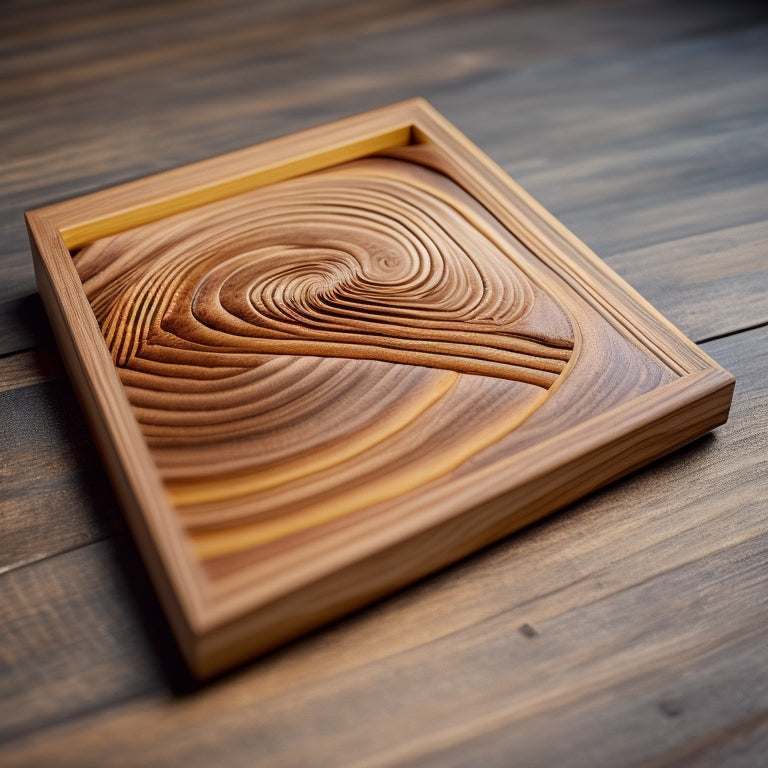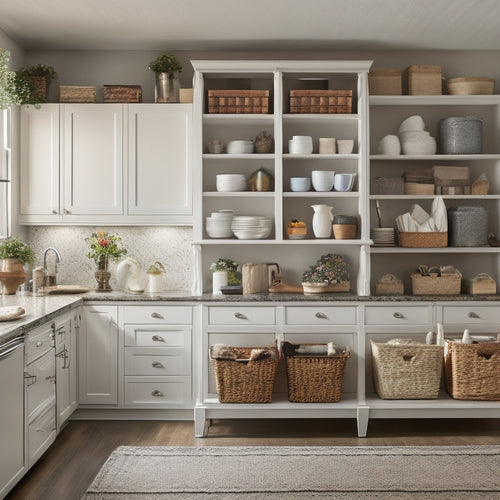
String Art Patterns: No Nails, Just Threads
Share
You'll need a cutting machine, 65 lb cardstock, and embroidery floss to create stunning string art patterns without nails. Download a free String Art SVG collection and upload it to your cutting machine's design space. Customize colors, layers, and stand design to personalize your art piece. Cut out the design with precise settings, then stack and assemble the layers, aligning small holes for threading. Choose your thread colors and experiment with different techniques. Once you've mastered the basics, you can explore creative display methods, mixed-media pieces, and mesmerizing thread combinations - and that's just the beginning of your string art journey.
Key Takeaways
• Use 65 lb cardstock in 12 x 12 size as the base material for string art patterns without nails.
• Cut out intricate designs using a cutting machine like Cricut Maker or Explore with a free downloadable String Art SVG/PDF/DXF collection.
• Assemble cut pieces into layers, aligning small holes for threading, and connect layers with 3D adhesive foam dots.
• Experiment with different threading techniques, colors, and combinations to create unique string art patterns.
• Maintain ideal thread tension and consider varnishing the design to keep it vibrant and dust-free.
Materials and Essentials
Gather your creative arsenal by stocking up on the following essential materials:
- 65 lb Cardstock in 12 x 12 size
- Embroidery Floss or Macrame Cord with a diameter of 1 mm
- A free downloadable String Art SVG/PDF/DXF collection
- A cutting machine like Cricut Maker or Explore
- 3D Adhesive foam dots for layer connection
With these string art tools and techniques, you'll be prepared to ignite your creativity.
Think beyond the basics and explore unique string art color schemes and inspiration online. You can find stunning designs, from geometric patterns to whimsical shapes, to spark your imagination.
Remember, the right materials and a dash of creativity are all you need to get started on your string art journey.
Design and Cutting Process
Upload the downloaded String Art SVG file to Cricut Design Space, where you'll customize colors, layers, and stand design to bring your unique vision to life.
Take advantage of the customization options to personalize your art piece. Adjust the colors to match your mood, and experiment with different layer arrangements to create a one-of-a-kind design.
Once you're satisfied, set up your cutting machine with the correct machine settings for cardstock. Guarantee the cutting settings are spot on for clean cuts, and let the machine do its magic.
With the cut pieces ready, you're one step closer to creating a stunning string art design that's all yours!
Building the String Art
With your cut pieces in hand, stack and assemble them to form layers, carefully aligning the small holes that will guide your threading process. Apply adhesive foam dots to connect the layers, ensuring rigidity and stability.
Now, it's time to get creative with your threading techniques! Choose your favorite color combinations and start threading using your macrame cord and embroidery needle. Maintain even tension to prevent curling, and don't be afraid to experiment with different patterns and designs.
As you weave your magic, remember to keep your threads taut and your patience in check. With each carefully placed stitch, your string art masterpiece begins to take shape.
Display and Creative Uses
Once you've completed your string art design, you can proudly display it using the included stand or frame, or get creative and come up with your own unique display method.
You can experiment with different angles, hang it from a wall, or even create a 3D installation. The possibilities are endless!
Consider innovative applications, like using your string art as a functional piece, such as a geometric mirror frame or a decorative wall organizer. You can also explore artistic interpretations, like combining your string art with other materials, like fabric or paper, to create a mixed-media masterpiece.
Whatever you choose, your string art is sure to be a conversation starter. So, get creative and show off your masterpiece!
Tips and Additional Info
To guarantee that your string art remains vibrant and dust-free, apply a clear coat of varnish or sealant, following the manufacturer's instructions, and gently dust the design periodically with a soft-bristled brush.
When threading, maintain ideal thread tension to prevent curling or sagging. Experiment with different thread colors and combinations to create unique designs – remember, it's all about the vibe you're going for!
If you're feeling adventurous, try layering different threads for a mesmerizing effect. And don't be afraid to get creative with your color experimentation – after all, that's what makes string art so much fun!
With these tips, you'll be well on your way to creating stunning, dust-free masterpieces that'll make everyone go 'wow!'
Frequently Asked Questions
Can I Use Other Materials Besides Cardstock for the Base?
You're thinking outside the box, wondering if you can ditch the cardstock for something more exciting. Absolutely, you can!
Watercolor paper adds a beautiful texture, while fabric backing provides a unique softness. Just make sure you adjust your cutting settings accordingly.
For watercolor paper, reduce cutting pressure to prevent tearing, and for fabric, use a deep-cut blade and stabilize with a cutting mat.
Happy experimenting!
How Do I Prevent Knots While Threading the Design?
The age-old problem of knot-tastic frustration! You're not alone, friend.
To avoid those pesky knots, make sure to maintain ideal thread tension - not too loose, not too tight.
Also, try yarn conditioning: gently stretch and smooth out your embroidery floss or macrame cord before threading. This will reduce tangles and make the process smoother than a well-conditioned strand of hair.
Now, go forth and thread with confidence!
Are There Any Alternatives to Adhesive Foam Dots for Layering?
You're wondering about alternatives to adhesive foam dots for layering, right? Well, you're in luck! Double Sided Tape is a fantastic option, providing a strong hold without the bulk. Simply apply it to the back of each layer, press firmly, and voilà!
For added stability, consider using Magnetic Bases – they're perfect for larger designs or those that require extra support.
Can I Create Custom String Art Designs Without an SVG File?
You want to create custom string art designs without an SVG file? No problem! You can use the Grid Method or Freehand Drawing to create your design.
For the Grid Method, divide your cardstock into squares and draw your design, using each square as a guide.
For Freehand Drawing, simply draw your design directly onto the cardstock.
Either way, you'll need to manually cut out your design, but the result will be totally worth it.
How Do I Store My String Art Patterns When Not on Display?
Did you know that 75% of crafters store their art supplies in a dedicated space? You're likely among them!
When storing your string art patterns, prioritize dust protection by placing them in a sealed container or bag. For folded storage, gently fold your art into a compact shape, securing it with a soft clip or rubber band.
This way, you'll keep your masterpieces dust-free and ready for their next display.
Related Posts
-

3 Essential Tips to Boost Home Storage Capacity
You're one step away from freeing yourself from clutter chaos! To boost your home storage capacity, start by purging ...
-

10 Best Space-Saving Hacks for Tiny Guest Rooms
You're about to transform your tiny guest room into a cozy retreat that's both functional and aesthetically pleasing....

